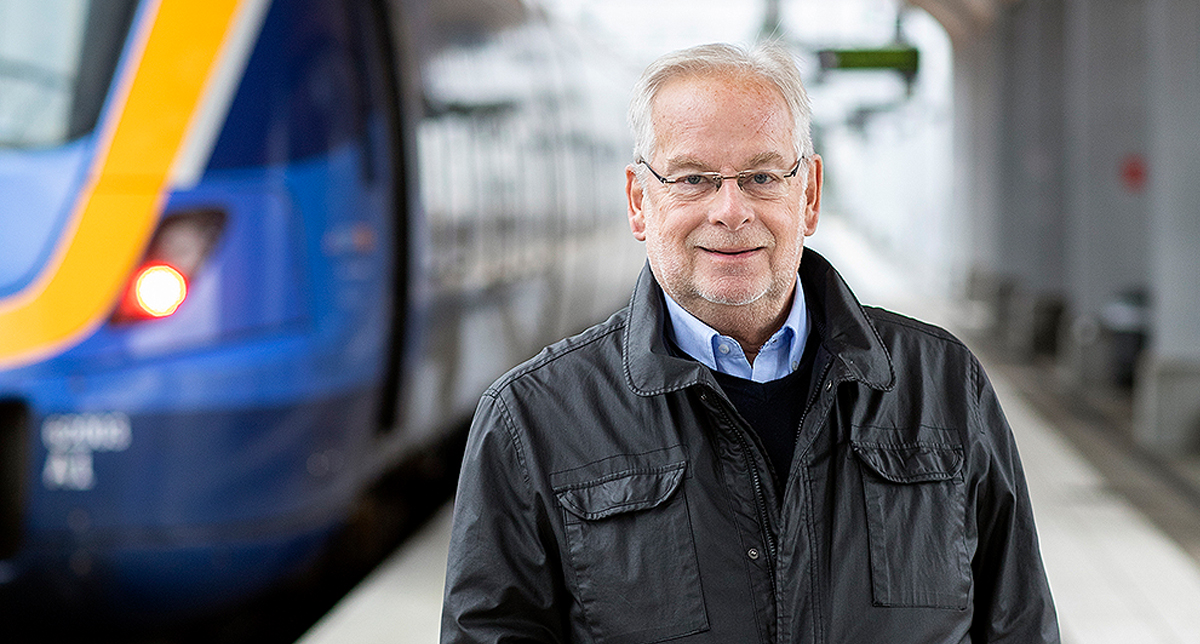
EU-funded planning phase for Norrbotniabanan completed successfully
Planning for the first stage of Norrbotniabanan (the North Bothnia Line), 130 kilometres of railway between Umeå and Skellefteå in Region Västerbotten, has been completed on schedule. The application to the European Union was submitted by Norrbotniabanan AB in partnership with the Swedish Transport Administration. The EU contribution was €10 million, with a further €10 million coming from regional funds.
“This is a genuine success story,” says Gusten Granström, CEO of Norrbotniabanan AB. “The Swedish Transport Administration has done a commendable job in terms of quality and, not least, staying on schedule. Without the support of the Swedish government, regional authorities and, above all, the EU, it would not have been possible. The business community is delighted to see that construction is underway and that the planning of the second stage of the line has begun. The question now is: how quickly can the line be built and when will it be opened?”
The grant application was submitted in spring 2015 to the EU’s Connecting Europe Facility (CEF), a key EU funding instrument to promote growth, jobs and competitiveness through targeted infrastructure investment at European level. Norrbotniabanan AB had submitted similar applications on two previous occasions, although without the support of the Swedish government, a prerequisite for the application to be processed by the EU.
After the 2014 general election, the new government was adamant that the North Bothnia Line should be built and the following year it threw its weight behind the bid, with the Swedish Transport Administration as partner. The application was granted by the Innovation and Networks Executive Agency (INEA) in July 2015. The scope of funding was SEK 200 million, with SEK 100 million coming from the EU and the remainder from regional funds. This included project funds from Region Norrbotten, the largest city of which, Luleå, is the planned terminus for the North Bothnia Line. This sent a clear signal to the EU and INEA that the project enjoyed widespread support and was a priority in both Västerbotten and Norrbotten. The application prioritised the 12-kilometre section of track between Umeå and Dåva, as this has been much sought-after by Umeå Municipality, which is keen to improve connections with the two power stations in Dåva that supply the city with district heating. Work on this section commenced in 2017 and is due to be completed in 2024.
Planning of the rest of the route to Skellefteå was completed this year and is undergoing final review by the Swedish Transport Administration. Once approval is received, construction can begin.
“This is an important project, not only for northern Sweden but for Sweden and the EU,” notes Lars Bergdahl, project manager at the Swedish Transport Administration. “We have highly committed staff working on the project and this is vital to achieving good results on a project of this scope. We are now gearing up to plan the line northwards and for the beginning of construction along the entire first stage.”
“Seven years have now gone by and we can look back on a fantastic collaboration made possible by the financial support and joint work,” says Gusten Granström, “We would like to extend a special vote of thanks to the EU and INEA for excellent cooperation and, of course, the opportunity to get this rail project underway. It will provide us with a coveted tool to achieve the maximum effect from the enormous investments being made in northern Sweden, investments that are at the forefront of the European climate transition. We are now keen to see northwards planning proceed equally smoothly, ideally with continued support from the EU and in collaboration with the government, the Swedish Transport Administration and INEA,”





